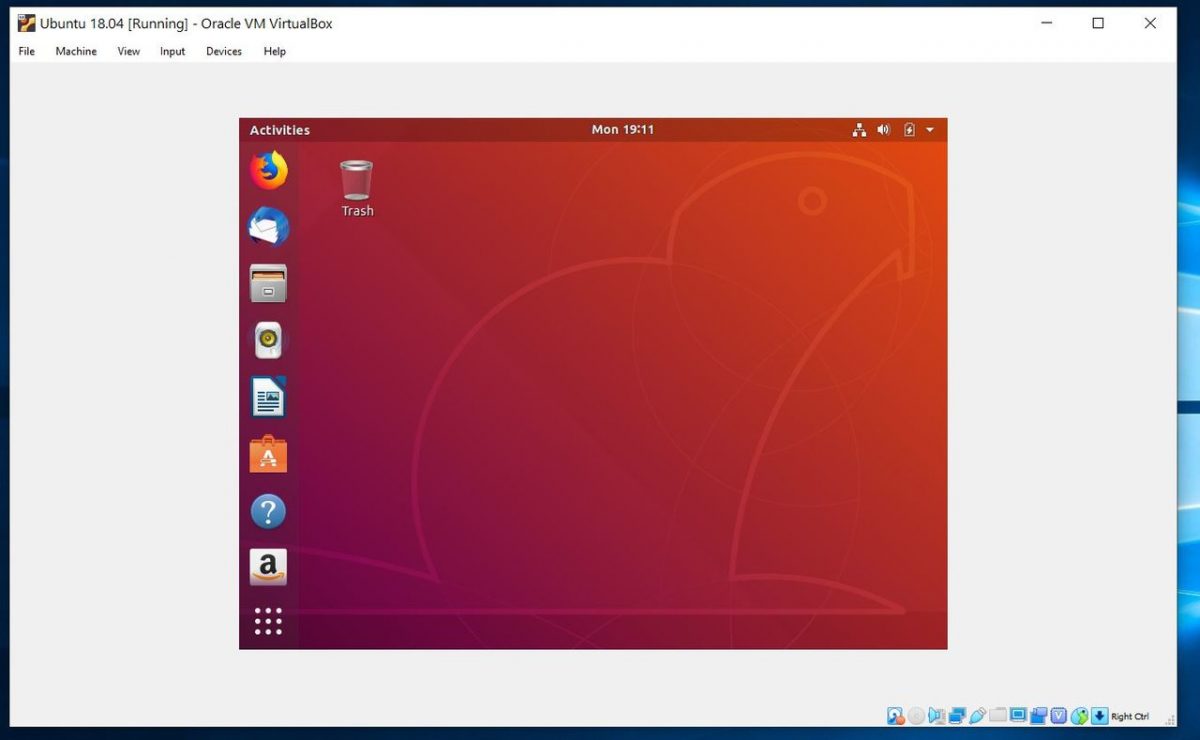
- #INSTALL UBUNTU LINUX ON MAC FOR VIRTUALBOX MAC OSX#
- #INSTALL UBUNTU LINUX ON MAC FOR VIRTUALBOX INSTALL#
- #INSTALL UBUNTU LINUX ON MAC FOR VIRTUALBOX DRIVER#
- #INSTALL UBUNTU LINUX ON MAC FOR VIRTUALBOX ISO#
#INSTALL UBUNTU LINUX ON MAC FOR VIRTUALBOX ISO#
As our machine is virtual, and as we only have an ISO image (has the download finished by now?) we do this in software. If this was real hardware you'd have a physical CD-rom and you'd want to instert it in the CD drive to boot from it. You can now check the Settings of your box where you can change most of the parameters.
#INSTALL UBUNTU LINUX ON MAC FOR VIRTUALBOX DRIVER#
Insert the CD in the virutal CD driver of VirtualBox When you are done you'll be back to the opening screen of VirtualBox and you'll see your box listed on the left hand side.

Remember what your guest operating will see as a "hard disk" is a single file on your host operating system. So the worst case you go over the installation again and learn it even better. Most of these can be changed later on and it is for your experimentatin anyway. You should not worry about the exact values. foobar), then you can slect the Type and Version yourself.Ĭontinue the setup with the values VirtualBox is suggesting for you. If you go with a totally different name (e.g. If the name starts with "ubu" it will setup the type to Linux and the version to Ubuntu 64-bit automatically. Open VirtualBox - Press the "new" button on the left In your version they might look slightly different. Most of the screenshots were taken by Yonit Gruber-Hazani for our DevOps Workshops. The screenshots you see here are from Mac OSX.
#INSTALL UBUNTU LINUX ON MAC FOR VIRTUALBOX MAC OSX#
Nothing fancy.Ī small warning: the different versions of VirtualBox have slightly different UI and Mac OSX and MS Windows versions also differ from each other. It is the standar Windows and OSX installation process.
#INSTALL UBUNTU LINUX ON MAC FOR VIRTUALBOX INSTALL#
Once the download ended, run these programs, agree to everything you usually agree when you install a program. It will download an exe file on Windows or dmg file on OSX. Select the latest version (for me it was VirtualBox 5.2.8) and the name of your host Operating System. Visit VirtualBox and on the big blue button to get to the Virtualbox download page. You can remove those files any time, but then you will lose your installation. If you turn off your guest operating system, then all that is freed up and it will only take up space on your hard-disk. just like any other application on your system. When your guest operating system is running it is allocated a certain amount of memory, CPU, etc.

The Opearting System installed in it, which we'll refer to as the guest, won't really know it is not running on real hardware.įrom the point of view of your operating system, the one that you already have on your computer (Most likely some version of MS Windowsor Mac OSX) it is just a directory with a few files in it. It will have some memory, CPUs, disk(s), a CD player, a video card with some memory, network card(s). From the inside that virtual computer will look like any other computer. VirtualBox is an application that can run on MS Windows, Mac OSX, or LinuxĪnd then it can create Virtual computers. While we are waiting for it to download, let's do something else: We'll use the downloaded file in a minute. (The 1 is just a sub-release number, not the date.)Īn ISO image is a single file that looks like a CD-rom from the inside. At the time of this writing it is Ubuntu Server 17.10.1īecause it was released in 2017 October. Download, install, and configure VirtualBox.Download the ISO image of Ubuntu Server.In this article we are going to use Ubuntu, one of the popular distributions.

There are many distribution DistroWatch has a list of "top 100". Editors, games, databases, web servers, etc. A "distribution" is like a package in which some team collected many useful software.

On the other hand most people use the word "Linux" to describe a "Linux Distribution" that includes 10s of thousands of programs, including the Linux kernerl. On one hand Linux officially refers to the "Linux kernel" which is the core of what makes a computer work for you.


 0 kommentar(er)
0 kommentar(er)
